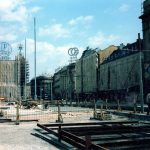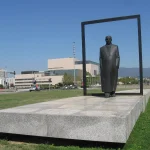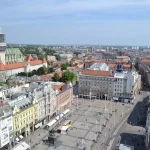The area that is now Zagreb had been inhabited long before it became Zagreb: evidence of human presence found on the southern slopes of Medvednica Mountain can be traced back to 50 to 80 thousand years. The flat area closer to the Sava River bears traces of human settlements from the Stone Age, 6th to 5th ct B.C.
Life went on in a relatively turbulent manner, with various tribes attacking the people of these areas until a Roman settlement called Andautonia was built here in the 1st ct AD. Andautonia was the cultural and political centre of this part of Pannonia until the 4th ct AD, when it was slowly abandoned and finally destroyed by the Huns, Goths and the Lombards during the Great Migration.
The Avars and the Slavs came here during the 6th and 7th ct and the indigenous people embraced the Slavic language and customs, and, with time, Christianity.
The following centuries were perhaps the most important for Zagreb’s history because this is when the two hills of Zagreb, Gradec and Kaptol, were starting to become settlements.
The beginning of life at Kaptol can be traced to the period of around the 10th ct. King Ladislaus founded the Zagreb diocese in Kaptol in 1094, so Kaptol became the bishop’s seat. The existing church was made into a cathedral and was consecrated in 1217. It was destroyed during the Mongol invasion in 1242 and then renovated again in 1263.
A fort is believed to have been built on the other hill, Gradec, in the 9th ct, but the town was first mentioned in writing in 1241, when Gradec was given the status of a free royal city by King Bela IV’s charter called the Golden Bull. This was very important because it gave its citizens various rights and responsibilities. In turn, defensive walls were to be built around the city to protect it from possible Mongolian invasion. Even though some parts of the defensive walls were torn down, they definitely gave the Upper City its today’s appearance.
Kaptol didn’t have any defensive system at the time and it was only three centuries later, in 1512, that a defensive wall was built around the Cathedral, as the danger of Ottoman invasion grew.
The two cities were not on good terms with one another and the valley of Medveščak creek (present day Tkalčićeva Street), which was in the middle of the two hills and didn’t belong to any of the two cities, was frequently a battlefield for the residents of secular Gradec and sacral Kaptol. They got along only when they had common commercial interests, otherwise bishops has a habit of excommunicating Gradec and citizens of Gradec, in turn, had a habit of burning and looting Kaptol.
In the end, the thing that united them wasn’t commercial, but dire need – the area was raided by Turks, Kaptol lost its estates to the Turks and citizens of Gradec had their privileges limited, so, in order to survive, they put their differences aside and started co-living in peace.
In mid 18th ct the entire country was in pieces, Varaždin became the capital of the Croatian State, and so Zagreb began losing its status and its inhabitants.
As Ban Jelačić Square was turned into a marketplace and the Ottoman danger was starting to decline in the late 18th ct, the city started getting back to its feet. Finally, in 1850 Kaptol and Gradec were united and they started to be known as Zagreb.
This caused a boom in all areas of life: buildings in the Lower City were starting to emerge, the clothing trade revived the city’s industry, and a railway finally connected Zagreb to other European capitals.
Various important cultural things ensued: the Music Institute was opened, the National Theatre was built, and the Croatian Academy of Arts & Sciences and the University of Zagreb were founded. The call for a pan-Slavic revival and union called the Illyrian movement started in Zagreb, asking for greater autonomy within the Austro-Hungarian Empire.
Amidst the overall prosperity, a devastating earthquake hit Zagreb in 1880, destroying more than 1,500 buildings around the city, including the Cathedral. A famous architect called Hermann Bollé led the reconstruction that went on for 26 years. Mirogoj cemetery was built, the Cathedral was rebuilt, and the walls around it, and some of the walls around the Upper City, were torn down, giving Zagreb the appearance it has today.
Zagreb stepped into the 20th ct with well over 60,000 inhabitants, so the city started spreading more and more, which continued when Croatia joined the Kingdom of Serbs, Croats and Slovenes in 1918. The city’s population increased by an impressive 70% during this period.
The Germans, aided by Ante Pavelić and the Ustaše, invaded the city in 1941, and so the city became the capital of the fascist Independent State of Croatia. This period ended in 1944 when Croatia became part of Yugoslavia.
Even though the city continued to expand and prosper in Yugoslavia, and even crossed the Sava River in the ‘60s, Zagreb took second place to Belgrade, so the people of Zagreb felt that they were in an unfair position.
Zagreb became the capital of Croatia in 1991 and it was here, on St. Mark’s Square, that the independence was proclaimed. The city wasn’t affected by the war because it was far away from the front lines, but it was attacked on two occasions in 1995, killing 7 people and wounding 200. After the war ended in December 1995, the city started getting back to its feet.
It is now the capital, as well as the cultural, educational and administrative centre, and the biggest city in Croatia, with one fourth of the country’s population living here. It keeps on growing and increasing its cultural and touristic offer and is slowly cementing its status of one of the most popular destinations in this part of Europe.










